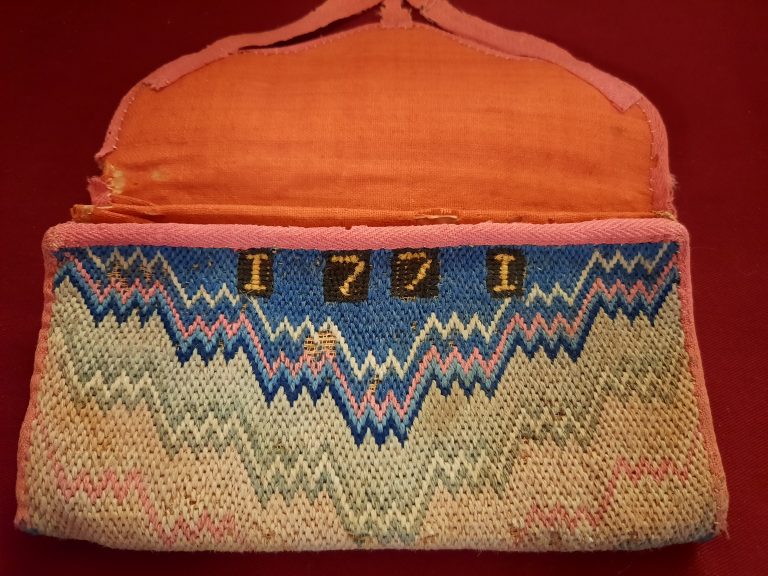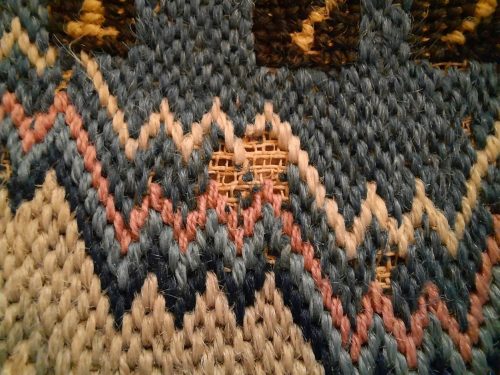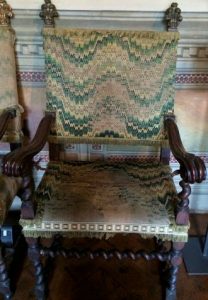
Bargello Needlework is often referred to by various historians as “Florentine Canvas Work”, “Hungarian Point”, and “Flame Stitch”. It is a style of needlepoint embroidery featuring flat, vertical stitches laid parallel with the canvas weave rather than crossing the intersections diagonally, as is the case in most canvas stitching. The stitches, in both gradating tones of the same color and in contrasting colors, are arranged in a wavy or zigzag pattern.

An early example of this work is found in a series of needlepoint-cushioned chairs that were found in the Bargello Palace in Florence, Italy and are now included in the collections of the Bargello National Museum. The chairs, believed to have been created in the 17th century, feature backs and seats displaying a traditional curved Bargello design.

Traditionally, Bargello was stitched in wool on canvas. Embroidery done this way is remarkably durable. It is well suited for use on pillows, upholstery and even carpets, but not for clothing. In most traditional pieces, all stitches are vertical with stitches going over two or more threads. The patterns are often naturally geometric, but can also resemble highly stylized flowers or fruits.
Bargello is considered particularly challenging, as it requires very precise counting of squares for the mathematical pattern connected with the various motifs to accurately execute designs.